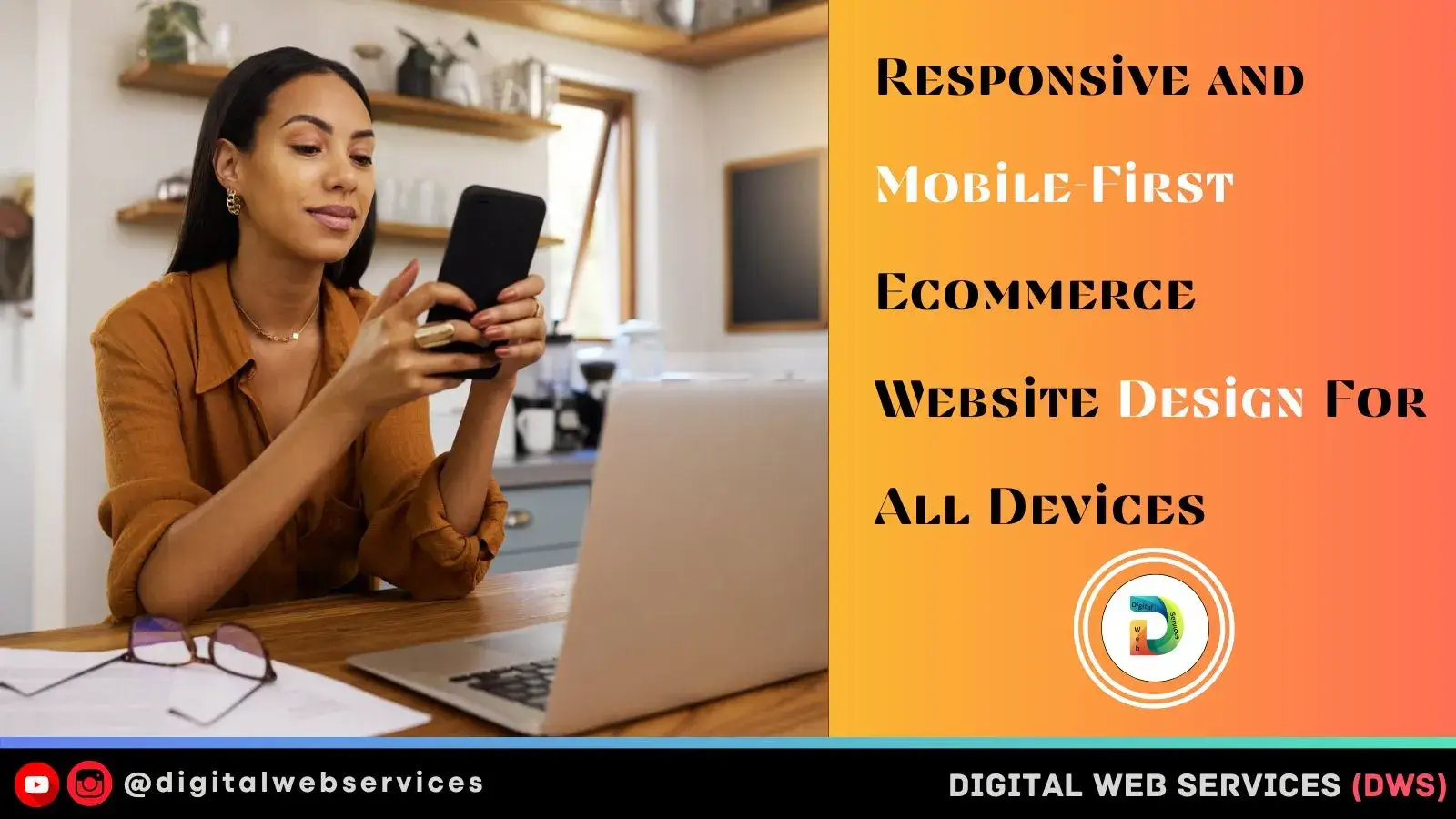
Technological advancements continuously redefine how businesses operate and how consumers engage. Just picture yourself navigating an online store that’s not optimized where images are slow to load, and the text is barely readable. It’s a genuine test of patience, often pushing potential customers away.
Envision a seamless shopping experience tailored to your device’s screen, where every click or swipe counts. This epitome of user-centric design is what mobile-first and responsive web design aims to achieve. Renowned entities like Rainstorm Studio emphasize the significance of these design philosophies in today’s ecommerce landscape, highlighting the need for adaptability and forward-thinking.
Recognizing The Importance Of Responsive Ecommerce Sites
In today’s digital landscape, mobile usage dominates. The emergence of smartphones and tablets has revolutionized the way consumers shop, making it imperative for businesses to adapt:
- Online Shopping Trends: Most global Internet users shop on mobile devices. With such a vast user base, businesses can’t afford to ignore mobile optimization.
- Enhanced User Experience: Mobile-optimized sites reduce bounce rates. A user-friendly interface translates to increased customer satisfaction and repeated visits.
- SEO Advantages: Mobile-first indexing by Google emphasizes the need for mobile optimization. Sites adhering to this enjoy higher ranks and greater organic traffic.
- Staying Competitive: As customer expectations evolve, businesses not investing in mobile responsiveness risk losing market share.
It’s clear: in the digital age, businesses must prioritize mobile-responsive designs. This transitions us to the next vital point: understanding the core principles behind the mobile-first design.
Understanding Mobile-First Design Fundamentals
The shift to mobile-first design responds to evolving digital user patterns; it’s a direct response to the evolving consumption patterns of digital users. Prioritizing mobile screens ensures businesses cater to most of their audience:
- Design Philosophy Shift: Designing for mobile first ensures a faster, more streamlined experience for most users who access content on the go.
- Contrast With Responsive Design: While responsive design adjusts to the device, mobile-first design prioritizes mobile views from the outset.
- Progressive Enhancement: A strategy where the core web content is delivered first, followed by advanced features, ensuring every user gets content regardless of their device’s capabilities.
Grasping the essence of mobile-first design sets the stage for practical implementation. With these fundamentals in place, let’s look into how businesses can build effective mobile-first ecommerce sites.
Building A Mobile-First Ecommerce Site
Mobile optimization reimagines the user experience, ensuring seamless shopping on any device:
- Simplified Navigation: Minimalistic designs with a clear call to action aid mobile users in their shopping journey.
- Touch-Friendly Elements: Finger-friendly design elements reduce misclicks, addressing a common frustration among mobile users.
- Image Optimization: Compressed yet clear images are essential for quick load times and retaining mobile users’ attention.
- Smooth Checkout: Auto-fill forms, mobile payment options like Apple Pay or Google Pay, and guest checkouts can increase conversions.
Building with a mobile-first approach provides a foundational user experience. But to truly set your site apart, mastering advanced techniques is the way forward.
Mastering Advanced Design Techniques
Advanced techniques harness new technologies for an enhanced user experience.
- Fluid Grid Layouts: These layouts ensure the site’s design elements resize within parameters, offering a consistent look regardless of device dimensions.
- CSS Media Queries: They’re crucial for responsive design as they determine device characteristics, allowing content adaptation accordingly.
- Progressive Web Apps (PWAs): PWAs offer a glimpse into the future of mobile web, merging the best aspects of web and mobile apps.
With the basics mastered and advanced techniques in play, the focus now shifts to measuring results. How can establishments evaluate the success of their mobile-first ecommerce strategies?
Assessing Your Mobile-First Ecommerce Success
Adopting a mobile-first strategy requires regular effectiveness checks—it’s vital to gauge its impact and effectiveness regularly:
- Performance Analysis Tools: Tools such as Google’s Mobile-Friendly Test or PageSpeed Insights can show how effectively a site is optimized for mobile.
- User Behavior Insights: Analytical tools, like Google Analytics, present a detailed breakdown of mobile user interaction, highlighting areas ripe for improvement.
Periodic assessment offers insights into areas of success and potential improvements. But with the world of ecommerce rapidly changing, how can businesses anticipate and prepare for future mobile trends?
Anticipating Future Mobile Ecommerce Trends
In the evolving ecommerce landscape, staying updated on future technologies is essential for long-term success:
- AR/VR Integration: The confluence of augmented and virtual reality (VR) with ecommerce promises a transformative shopping experience.
- Voice Search Optimization: With the rising use of smart speakers and voice assistants, voice search optimization emerges as a cornerstone of effective ecommerce strategies.
As technology progresses, staying at the forefront of ecommerce trends becomes pivotal. With AR, VR, and voice search on the horizon, the future of mobile ecommerce is exciting and full of promise.
Concluding Thoughts On Mobile Design
The growth of mobile shopping highlights the necessity of responsive ecommerce platforms. Adopting mobile-first design principles is key for businesses to stay relevant and competitive. To maintain an edge in a mobile-driven world, companies should update their design techniques, assess their mobile strategies regularly, and be agile in adapting to emerging trends like AR/VR and voice search. Ultimately, the future favors those who prioritize the mobile user experience.
Digital Web Services (DWS) is a leading IT company specializing in Software Development, Web Application Development, Website Designing, and Digital Marketing. Here are providing all kinds of services and solutions for the digital transformation of any business and website.










